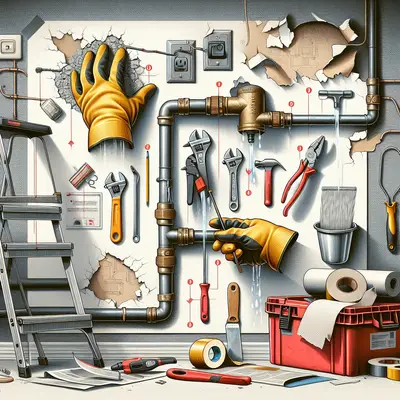When it comes to home improvements, energy efficiency upgrades not only help the environment but can also lead to significant savings on your utility bills. Here are five essential DIY projects to help you make your home more energy efficient and sustainable.
Insulate Your Home
Insulation is a key component of any energy-efficient home. By insulating your walls, attic, and basement, you can significantly reduce heat loss in winter and heat gain in summer. Use insulation materials like fiberglass, cellulose, or spray foam. Remember to wear protective gear and follow safety instructions, as some insulation materials can be hazardous if not handled correctly.
Install Energy-Efficient Windows
Windows can be a major source of heat loss. By replacing old windows with energy-efficient ones, you can significantly lower your heating and cooling costs. Look for windows with double or triple glazing and low-E coatings. If replacing windows is not an option, consider applying window film or using thermal curtains to improve their energy efficiency.
Upgrade to LED Lighting
LED lights use significantly less energy than traditional incandescent bulbs and last much longer. Replacing your home's lighting with LED bulbs is a simple and cost-effective way to reduce your energy consumption. Choose bulbs with a warm color temperature for a cozy atmosphere and a high CRI (Color Rendering Index) for accurate color reproduction.
Install a Programmable Thermostat
A programmable thermostat allows you to set your home's temperature for different times of the day, reducing energy use when you're not home or when you're asleep. Some models can even be controlled remotely using a smartphone app. Programmable thermostats are typically easy to install and can save you up to 10% a year on heating and cooling costs.
Seal Air Leaks
Air leaks can significantly increase your heating and cooling costs. Common sources of air leaks include doors, windows, and electrical outlets. Use weatherstripping or caulk to seal these leaks and improve your home's energy efficiency. Don't forget to check your home's ductwork as well, as leaks in the duct system can also lead to significant energy loss.
Conclusion
Energy efficiency upgrades not only benefit the environment but can also lead to significant savings on your utility bills. By following these five steps, you can make your home more energy efficient and sustainable. Remember, every little bit helps when it comes to saving energy and reducing your carbon footprint.



